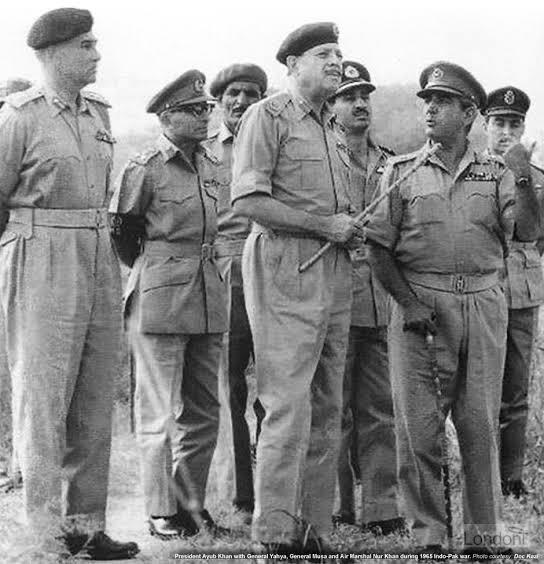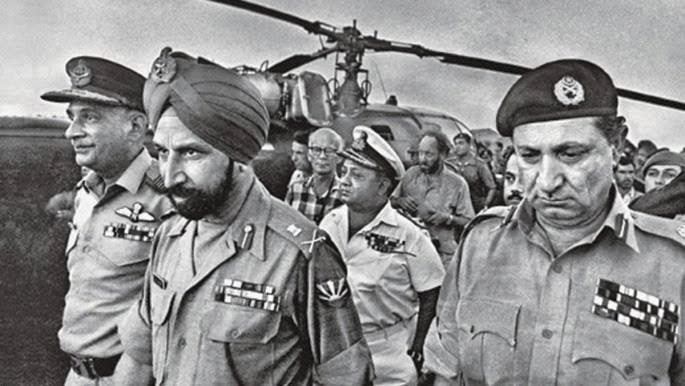Written by: Dr. Dushka H. Saiyid
Posted on: May 10, 2021 | 
(L to R) The book cover and the author, Sarmila Bose
Sarmila Bose in her book “Dead Reckoning” has unearthed such important facts through her impeccable and detailed research that it becomes imperative to discuss her findings, even ten years after the book was published. Although regarded as controversial by the mainstream media and reviewers, she has raised serious questions about the Indian and Bangladesh narrative about the events of 1971 that led to the break-up of Pakistan. The author’s ability to interview Bangladeshis in their mother tongue and draw them out about their experiences, has given her research great authenticity.
Bose reminds us that General Yahya Khan, who had taken over from General Ayub Khan as the new ruler of Pakistan, abandoned the principle of parity between the two wings of the country in favor of direct elections based on universal adult franchise. This was a long-held Bengali demand as the eastern wing was more populous. The elections of December 1970 were widely accepted as the first fair and free general elections, and Yahya had more than once referred to Sheikh Mujib as the future Prime Minister of Pakistan.

(L to R) General Musa Khan, Maj. General Rafi Khan, Field Marshal Ayub Khan, Air Marshal Nur Khan and General Yahya Khan
While Mujibur Rehman’s Awami League won 160 of the 162 seats but won no seat in West Pakistan, while the PPP got 81 out of 138 seats in West Pakistan. Bose quotes GW Choudhury as saying that at no point did Sheikh Mujib declare that a vote for him was a vote for a separate state, and he kept trying to negotiate an arrangement in which he would be the prime minister of a united Pakistan, right up to the day that the military action began on 25th March. Bose argues that since the voter turnout was only 56% in East Pakistan, of which 75% voted for Mujib’s party, it meant that 42% voted for the Awami League. The author has opined that this low turnout cannot be interpreted as a vote for secession, nor was Mujib’s campaign based on it, and at best it was a vote for change.
When the postponement of the meeting of the National Assembly was announced on March 1, Mujib called for a general strike, and the control of the federal government over East Pakistan began to slip. The Bengalis in East Pakistan had revolted, and Mujib began to rule through decrees. Bose points out that the movement was neither non-violent nor peaceful, despite Mujib’s professions to the contrary. The author describes the movement as “xenophobic and ethno-linguistic Bengali nationalism”. Since the killings against non-Bengalis had begun, starting with Khulna, Chittagong, Dacca and some of the smaller towns, curfew was declared on the 2nd of March, but next day the troops were withdrawn, leading to further deterioration of law and order.
Yahya gave a tough speech on the 6th of March and announced the appointment of General Tikka Khan, later known as the “Butcher of Bengal”, as the new governor of East Pakistan. The refusal of the Bengali Chief Justice to administer the oath to Tikka Khan, was an expression of how fast the federal government was losing control over East Pakistan. Sheikh Mujib addressed the famous public meeting at the Ramna Racecourse Maidan (ground) on the 7th of March, where he stopped short of declaring independence. General Yahya flew into Dacca on the 15th of March for talks, but they broke down, and the regime opted for military action on the night of 25th March.
Sarmila gives a detailed account of the attack on Dacca University on the night of 25th and 26th morning, in which both some of the faculty and the students, who were still in their hostels, were targeted and eliminated. There were weapons at the university and resistance, but it was all crushed. Since Lt General AAK Niazi did not take over the Eastern Command till the 10th of April, this operation at the Dacca University against faculty and students took place under Tikka Khan’s watch.
The author breaks from the accepted narrative and relying on her research writes: “Moreover, army personnel were not the only ones terrorizing and killing unarmed people in East Pakistan. The Bengali villagers described activists of the Awami League as being torturers and killers as well. They wanted to kill not only West Pakistani security personnel…but also civilian non-Bengalis of East Pakistan…”. The Biharis, who had migrated to East Pakistan at the time of Partition, became targets of Bengali nationalist violence.
According to one assessment in The Wall Street Journal on April 21, which Bose quotes, “in less than one month, with less than 50,000 men and limited firepower and air support,” the army had been able to subdue more than seventy-five million Bengalis. In May, the military authorities allowed a group of foreign journalists into East Pakistan, and the general assessment was that the armed resistance had petered out. However, the Pakistani regime failed to find a political solution, and with time, harassment by the Bengali rebels increased, as did the direct involvement of India.
As the war drew to an end, another round of killing of intellectuals who supported the Awami League followed on the night of 14-15 December. Bose points out the senselessness of these killing on the eve of the Pakistan Army’s surrender. The families of the victims say that Razakar groups like the Al Badr, local civilians who had been recruited by the Army to assist them, picked them up.
The author declares that “There was only one invading force in East Pakistan in 1971-that was India”. She argues that many Bengalis did not support the secession of East Pakistan. She also states that while there were instances of the Pakistan Army killing unarmed civilians, women and children were not targeted, and the stories circulated of the women’s hostel of Dacca University being attacked, turned out to be entirely false.
She quotes Rose and Sisson as concluding that the decision by India to intervene militarily was taken as early as April 1971. In the initial phase, the Indians did not make much headway, but from July to mid-October their training of the Mukti Bahini (Bengali guerrilla resistance movement) became more intensive, and they also became directly involved in their activities. From mid-October to November, Indian artillery, tanks and air force began to be used. The Indian army would make forays into East Pakistan then withdraw to Indian territory. After November 21, the Indian units did not withdraw, and instead launched attacks on all the important border regions with India. On 3 December, the Pakistan Air Force launched attacks on major Indian Air Force installations in north-west India. The Pakistani doctrine was that the defense of the east lay in the west, but they had temporized for two weeks before attacking, and then, according to General Niazi, not informed the Eastern Command.
The author questions the generally accepted figure of 93,000 Pakistani soldiers taken as prisoners of war. In March 1971, there were a total of 12000 Pakistani troops in East Pakistani. General Niazi has stated that as the crisis worsened, more troops were flown in and the troops under his command increased to 34000, while 11000 were police and other armed personnel, while the rest would have been supporting staff like nurses and barbers.
Bose casts doubts about the figure of 3 million, allegedly killed in the war. She quotes William Drummond in The Guardian, who wrote an article on June 6, 1972, titled “The Missing Millions’, where he argued that the claim of 3 million was grossly exaggerated, and had acquired validity purely by repetition. When Sheikh Mujib had come out of incarceration after nine months, someone had mentioned the figure to him, and he had just kept repeating it. The author mentions that it wasn’t clear who was buried in the mass graves, Bengalis or non-Bengalis. She quotes Drummond as saying that the Home Ministry of Bangladesh had got 2000 complaints of killings by the Pakistan Army. Bose estimates that between 50,000-100,000 perished in the conflict, both combatants and non-combatants, Bengalis and non-Bengalis, Muslims and non-Muslims. According to her estimate, the number of Biharis killed could run into tens of thousands.

(L to R) Lt. General Jagjit Singh Aurora and Lt. General Amir Abdullah Khan (AAK) Niazi before signing the Instrument of Surrender
It takes a great deal of courage and integrity to go against a narrative that two powerful states, and innumerable journalists and writers have peddled for many decades. The excesses of the Pakistan Army are mentioned in detail, but so are that of the Mukti Bahini and the Awami League militants. She questions the sensational reporting of Mascarenhas, which set the tone for reporting on the civil war in the West, declaring that after he had fled to London, his reporting was based on hearsay.
Pakistan paid a heavy price in failing to accept Sheikh Mujib as the Prime Minister of Pakistan, when he had the numbers. The launch of a military operation was strategically suicidal, and no solution to a political problem. The Hamoodur Rehman Commission Report should have been published in its entirety, as Pakistanis have a right to know what led to such poor decision-making that split the nation in two.
You may also like: